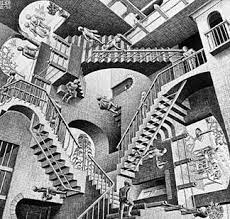- cross-posted to:
- casualpt@lemmit.online
This is such annoying chart. It implies that that these countries on top have more depressed people, but it correlates more accurately with how accessible the antidepressants are
I don’t think it was designed to imply that. None of the language appears to steer the viewer to a specific conclusion, letting the viewer interpret it for themselves.
That being said, I would agree that the data itself represents both access to mental health care and culture (specifically, if that culture has a stigma against it).
I think some of the larger countries are not really useful in the dataset though. I’m curious how say, California and say, Alabama, would look in the dataset.
Considering that 100+ is red, most is orange, low is yellow, it looks like “look these are the bad countries with depressed people”.
Holy crap I’m blind xD. I take it back, it does seem to portray the notion. Goes to show how subtle it is.
Yeah I think it the best would be comparisons in smaller areas, such US states or within Europe, where availability is similar within the area but culture might have bigger impact.
I have no idea how you could measure the people who’re in need of those medicine within area though, which would be the most interesting comparison. Are people in Finland more depressed than, say, Estonians?
I don’t think it was designed to imply that.
Are you suggesting that “Antidepressant Consumption” just accomplishes the goal of implying people are more depressed accidentally, then? It’s very effective, even if it tries to hide behind language.
Russia is just using Vodka.
Russia is sending all the depressed people to meat grinder
In seriousness, this chart doesn’t reflect self-medication.
I wonder if this overlaps with reported happiness in those countries.
More like a chart than a guide… still interesting, though
Seeing Portugal in second depresses me, but it’s kinda expected :/
They invented a whole musical genre about it. So there’s that.
True that 😅
Fado hits hard
Hm, so roughly corresponding to middle class purchasing power with Norway (and Finland a bit) being the outliers?
Russians seem to be a very happy bunch.
Or just don’t have access to proper mental health care
No, that can’t possibly be it. How could anybody not be happy to live in the greatest country in the world?
Yep. Their life expectancy is impressive! Really an outstanding example how to treat the population well.
I think they use vodka.
Why is there an entire continent, Africa, without any data? And Asia is only just represented. Is it because they are very low users, or they just weren’t considered in the data set? Or something else?
My takeaway: Be More Like Norway, with its higher susceptibility to seasonal affected disorder but low meds usage. It makes me think they’re doing something right.
I think this is a hyper/hypo chart in a way, two extremes of bad (over/under medicated).
Maybe thinking of it like the ‘Goldilocks zone’ for planets, in the right distance from their star for life, like on earth.
A measure of healthcare and mental health in your country. Somewhere between Norway and Finland is probably the right place to be (plus/minus a little); If you are not close to this zone, then there is something likely wrong/not being done right in your country.
Could be there is little to no healthcare, you could be under economic collapse, severe unemployment, under authoritarian rule, may be rampant drug use, may be doctors over prescribing medication (and/or prescribing instead of treating), or just no care about mental health (maybe a “get over it” macho attitude toward mental health).
Obviously always outliers, and every country is unique and cannot be conformed to this, but Norway and Finland generally rate pretty high on the happiness scale, so ~60-80 ppt (people per thousand) is a good range to shoot for.
Edit: To be clear, not a perfect indicator type of things; Denmark is scored as a very happy country and scores close, but out of that mentioned range (maybe the range should be a little higher or lower, or have a +/- 10 or something attached); Iceland also rated very happy, but scores way out of that range (though there may be clear geographic reasons for that), and could be a clear indicator of the above mentioned “every country is unique”, and thus that may actually be appropriate antidepressant ppt for a country so far north.
Also, a generalized chart of population for a whole country, should never be applied to an individual person.
Useless without actually showing what data was used to make this. Also, what does “number of antidepressants” mean exactly? Is the amount someone consumes, or the different brands they take?







